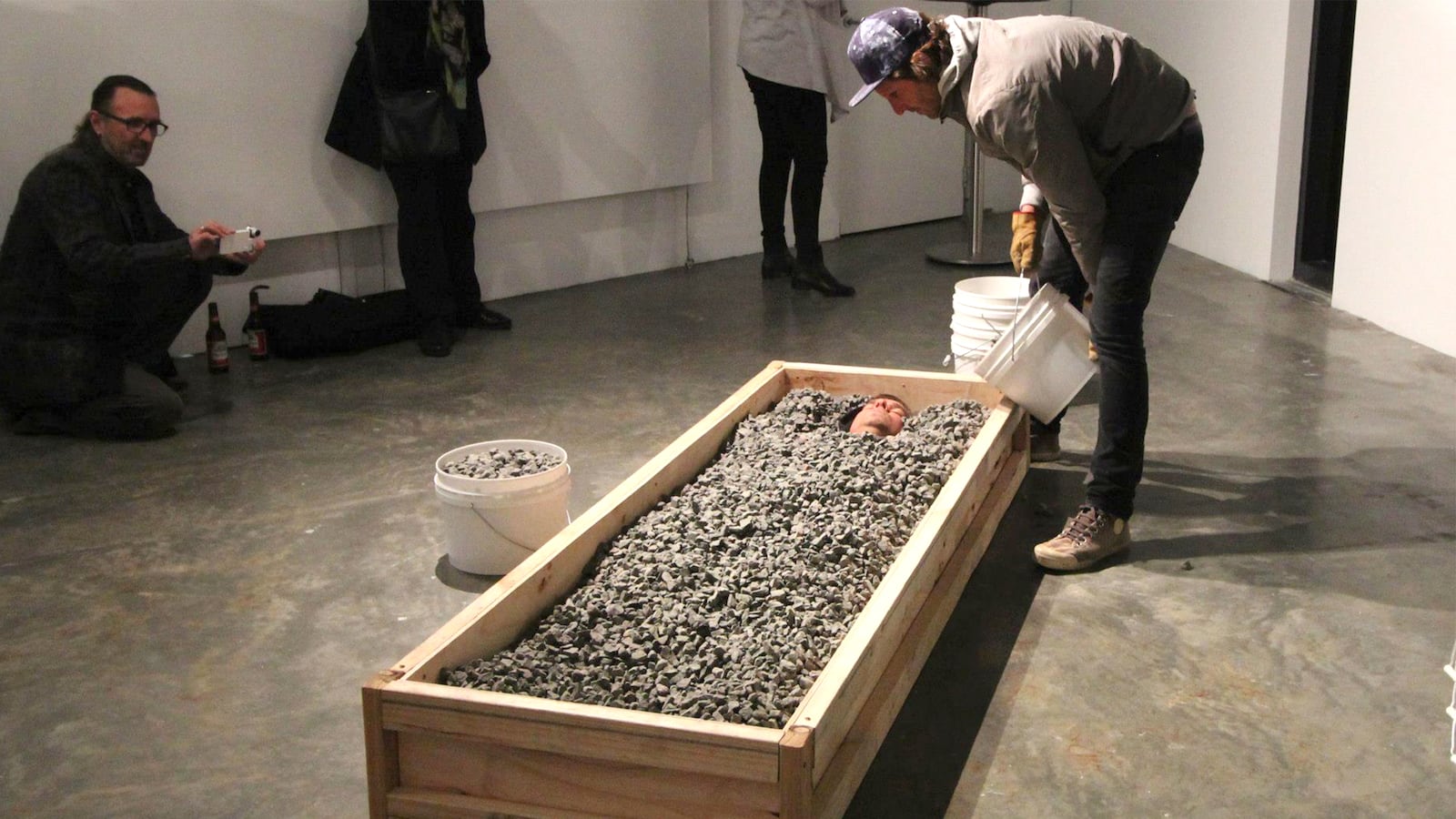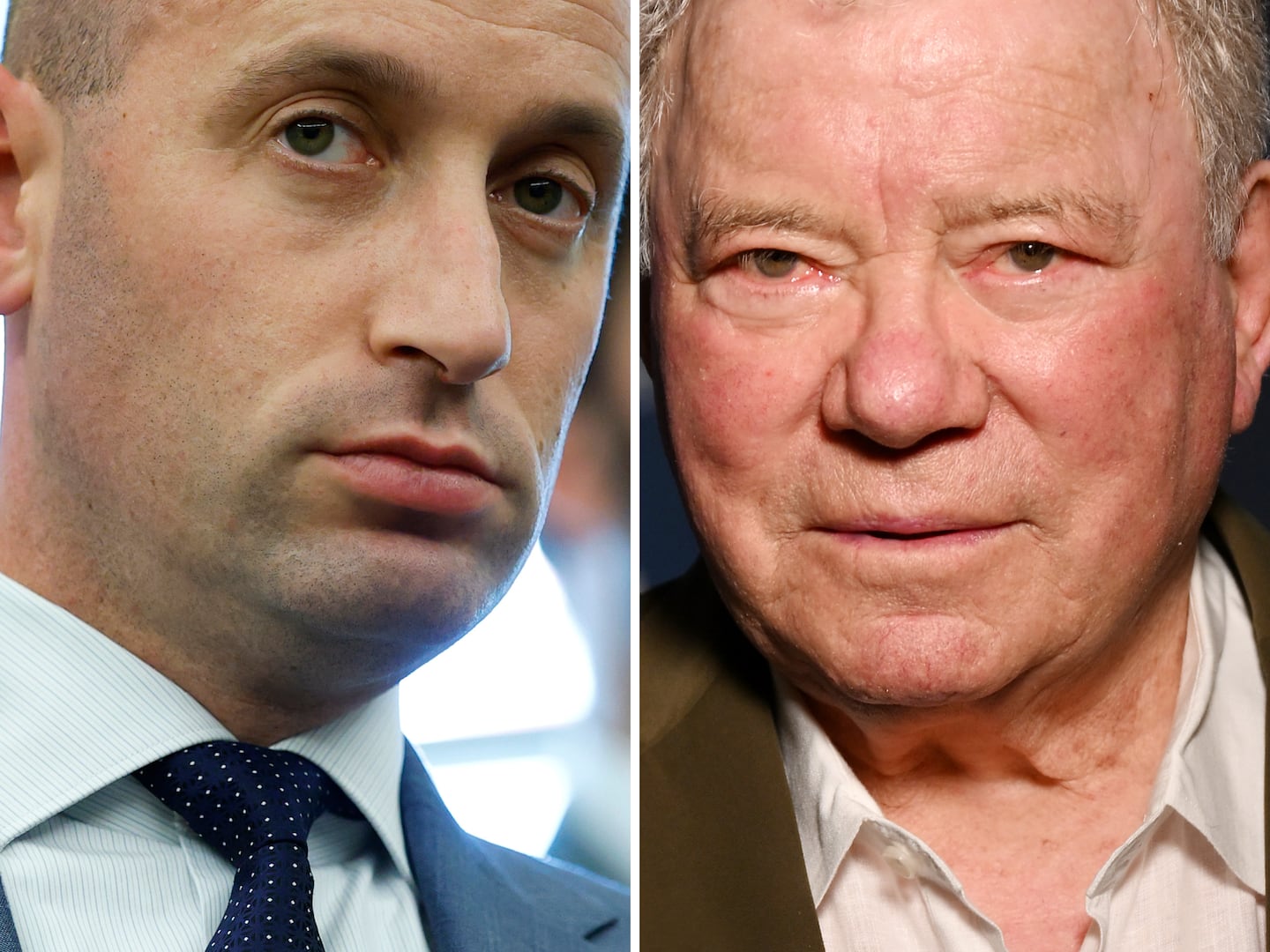It’s 5:59 p.m. on a cold winter’s night and a crowd of 50 people is crammed around a large wooden frame on the floor of the Verge Gallery in Sydney.
In one minute, performance artist Lucas Davidson will lie down inside the frame, supported by a few pieces of foam, and wait while his assistant buries him alive under 250 pounds of gravel.
The audience is hushed as Davidson lies calmly while eight buckets of gravel are emptied over him, spread smoothly and gently until only his toes and the tip of his nose are visible.
There is a palpable tension in the air. What next? Is that it? How long will he last? The audience murmurs and stands back at a safe distance from the spectacle before their eyes. For a few minutes they even stop drinking their wine and champagne.
This is precisely what Davidson, 44, has intended with his endurance art work, titled “Black Cell.”

It’s part of “Doing Time,” a new exhibition on the campus of Sydney University that brings five artists together in a response to imprisonment and detention.
Davidson’s conception is to be buried under the gravel for 60 minutes to prompt the audience to ponder the physical and psychological traumas associated with solitary confinement and sensory deprivation.
When Davidson arrived at the gallery half an hour beforehand, he seemed calm but admitted he was a little edgy. “I got buried for the first time four weeks ago, and have done it six times to prepare for tonight. The first time, I was underprepared and had an anxiety attack. I needed to know I could get out of it.”
Davidson stayed under longer each time, building up to an hour.
“I did 60 minutes, once, a few weeks ago,” he says. “It was quite painful. The weight of the gravel on my arms made me lose circulation in my hands, and when I moved even slightly, the gravel shifted and locked me down.”
“I said at the time I would not do it again. I am not sure if I will do 60 minutes tonight.”
There was no a-ha moment that led to tonight’s performance.
Davidson says he was reading about the experience of Brett Collins, a former Australian prison inmate who spent 60 days in solitary confinement in Sydney’s Long Bay jail in the 1970s while serving a sentence for armed robbery.
Collins wrote about the small, windowless “black cells” which gave Davidson the name for his work.

Now he is lying flat in his own black cell, focusing on his breathing and “thinking about what is going on in my body, trying to ignore the rocks poking into me,” he explains before lying down.
For a few minutes the respectful hush prevails, and a steady stream of people come up to peer at his exposed nose, take a photo and walk around the frame, as if trying to see or find something hidden in the gravel.
The curator of the exhibition, Carrie Miller, is slightly worried. “I am a little bit concerned for him, but I am just as concerned for the audience,” she admits. “The endurance produces feelings of anxiety in the audience. Three days ago, it occurred to me that there might be a desire on the part of the audience to rescue him and allay their sense of anxiety.”
Every 10 minutes Davidson’s assistant will bend down to tell him how much time has elapsed.
If something goes wrong, there is no Plan B.
“It’s not art if there are contingencies,” says Sian McIntyre, Verge gallery’s manager. “If it gets too much, we will get him out. But the waiting is part of the tension of how this exhibition works.”
After 30 minutes the crowd has swelled to well over 100 people and there are no signs of anxiety in the audience, which is making a loud buzz in a typical opening night scene.
Davidson’s chest is rising and falling gently, People come up and take a quick look, then move on. He has become commodified, an object of curiosity.
Jess Olivieri, 33, an artist from inner-city Potts Point, says she feels anxious. “It’s quite stressful to watch him. It does not look like he can get out if he wants to. How can he tell anyone?”
How does she feel sipping wine while Davidson endures his isolation? “I need this glass of wine right now,” Olivieri grins. “It’s very stressful.”
François Horion, 35, an IT business analyst, heard about tonight through a friend of a friend and did not know what to expect. “When I first saw it, I did not realize it was a live performance. Now I have made a connection with how it feels to be inside a jail. I’m a bit anxious, but not overly anxious. He knows what he’s doing.
“Everyone can relate to it from the beach, from being buried under sand. But at the beach you know there’s a way out and you can say stop. But not here.”
Samantha Ferris, 48, a gallery manager from nearby Surry Hills, knows the artist personally. “I was not anxious about the thought of the work, but going up to him, I do feel anxious now. I can see his eyes through the gravel. Maybe it’s the sense of whether he can communicate or not.”
As for the crowd’s tendency to almost forgetting he’s there, she is nonchalant. “That’s usual gallery behavior.”
Is he succeeding? “It’s working. Something is working. The audience has reactions they might not expect to have.”
If they expected to be more anxious, then they have hidden it well. I tell the man next to me that everyone has forgotten about him.

“But that’s the point, isn’t it?” he replies, referring to people who get locked away, out of sight. I am conscious of how slowly the time is passing, while I wait for the hour to be up, so we can leave.
As 7 p.m. looms, everyone instinctively swarms back around Lucas to see him return to the world. His assistant bends down to tell him it’s been an hour and suddenly, like a latter-day Frankenstein, he rises up through the gravel, unassisted, and walks away.
The audience claps and cheers briefly, Davidson disappears quickly into a corner and the crowd resumes its former mood.
A few minutes later he re-appears, unobtrusively, and stops to talk to members of the audience. It’s all low-key. There is no adulation or clamor to speak to him.
He appears fine, completely normal. How does he feel?
“Relieved,” he grins, and walks off, melting into the crowd.
Mission accomplished? Well, the artist stirred some tension when he was buried, then everyone more or less forgot about him until he returned to the world, when he was celebrated. Then we all moved on.
Art imitates life, again.






